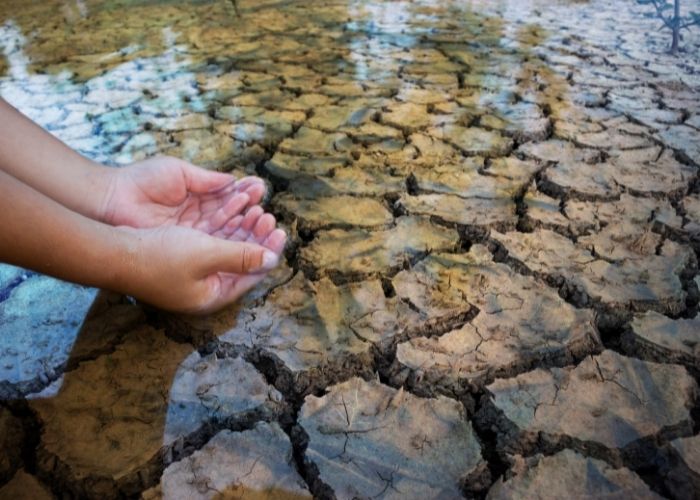MADRID – The rain of recent days has not improved the water level in the main reservoirs of the Spanish mainland. In total, the reservoirs are currently only filled to 43.9% of the capacity.
It has been nearly thirty years since the reservoirs held as little water at this time of year as they do today. In the past 34 years, there have been only three times that the level was even lower. That was in 1995 (43.5%), in 1993 (40.8%) and in 1992 (40.4%).
Water levels are calculated over a hydrological year, which does not start as a calendar year on January 1, but on October 1. The beginning of this hydrological year was very dry, but in this first week of March, it rained a lot in Spain. According to the Spanish weather service Aemet, an average of 17 litres of precipitation per square metre fell in Spain. This means that there was 60% more precipitation in the first week of March than in the entire month of February, the second driest February of this century and the third driest since the registrations started in 1961. With only 10 .9 millimetres of precipitation falling in February, only 21% of the normal amount of rain in this month.
Rain in Spain not enough
The rain in the first week in March was unable to compensate for the drought from the autumn and winter period. For some parts of Spain, it will still have to rain a lot in order not to get into trouble in the summer. The current water level in the main reservoirs is currently 20 percentage points below the average for the past ten years. At 30.4% of capacity, the situation is worst in the Guadiana reservoir and in the Guadalquivir reservoir, where even 28.5% of the capacity is water.
The Guadalquivir reservoir has seen 47% less rainfall since Oct. 1, than the average for the past 25 years, according to data from the Hydraulic Confederation of the Guadalquivir (CHG). In the south, the water reservoirs are also still suffering from the hydrological deficits of the previous year, as a result of which, on February, 7 of the 21 territorial units of this basin were in distress and another 10 on alert. Four territorial units were in pre-alert status and only two units were in normal condition.
In November, the CHG already declared the situation “exceptionally dry” in most of the Guadalquivir basin. It is now awaiting approval from the Council of Ministers to take measures to prevent even worse. The last time exceptional measures had to be taken was in 2017.
More rain expected
According to the forecast, it will continue to rain in Spain in the coming period. It will rain heavily at the end of this week, especially in the Mediterranean area. However, to compensate for the drought, it will have to rain heavily for weeks, or even months. This happened in the spring of 2018, after another period of exceptional drought. March 2018 was the wettest March month since registration. Only if that happens again this year will the drought that occurred from October have recovered somewhat. According to Aemet, the chance of a very wet March this year is only 20%.
Also read: Reservoirs in Spain almost drained


